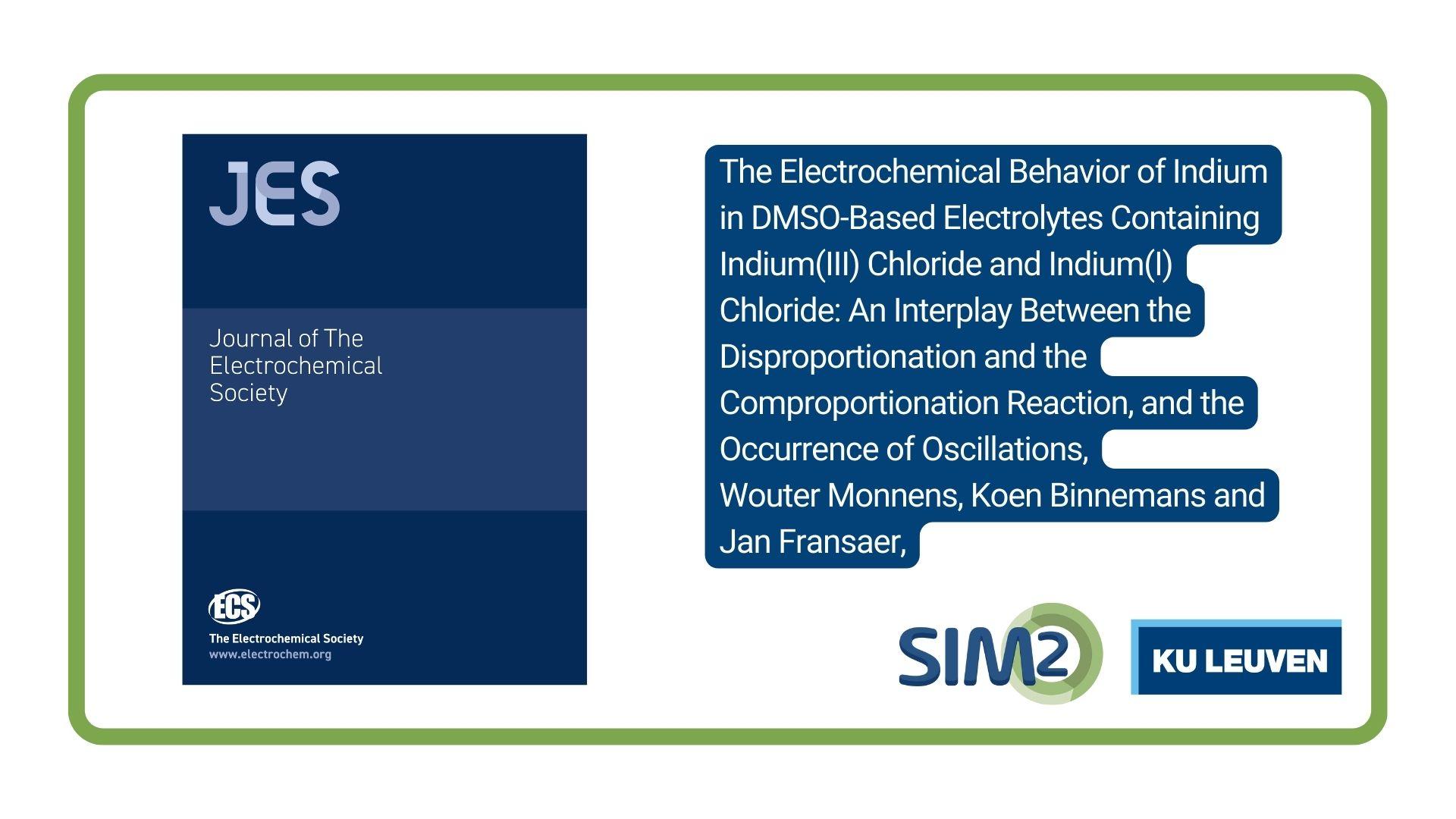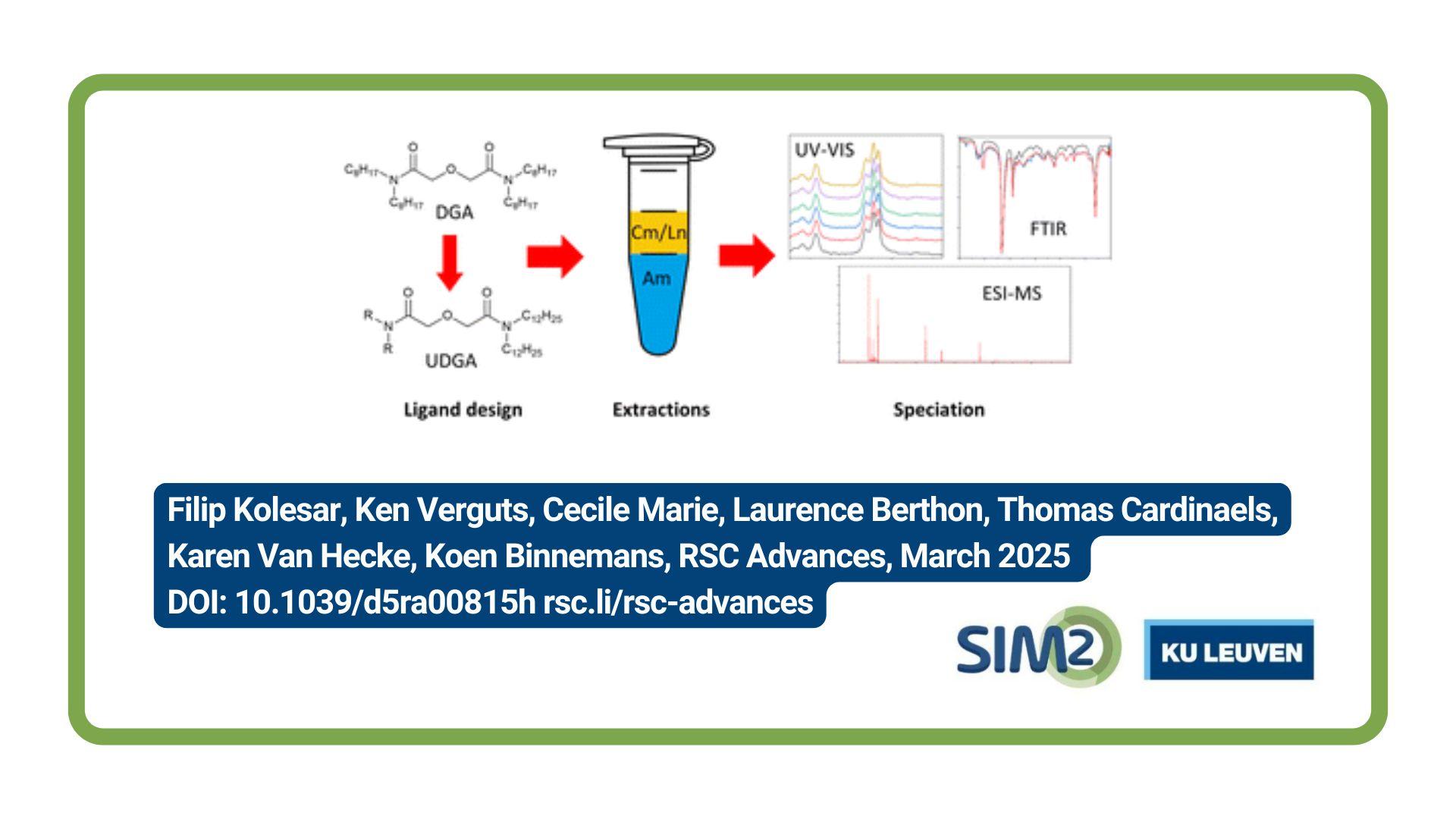Wouter Monnens, Koen Binnemans and Jan Fransaer of KU Leuven have a new article accepted by the Journal of The Electrochemical Society. The article is entitled The Electrochemical Behavior of Indium in DMSO-Based Electrolytes Containing Indium(III) Chloride and Indium(I) Chloride: An Interplay Between the Disproportionation and the Comproportionation Reaction, and the Occurrence of Oscillations.
The electrochemistry of indium was investigated using electrolytes composed of (1) indium(III) chloride (InCl3) in dimethyl sulfoxide (DMSO) and (2) indium(I) chloride (InCl) in DMSO, with tetraethylammonium chloride (TEACl) used as a conducting electrolyte. Cyclic voltammograms (CVs) in combination with quartz crystal microbalance (QCM) and rotating ring disk electrode (RRDE) tools revealed that indium(I) species play a prominent role during reduction. Both a disproportionation reaction and a comproportionation reaction were observed involving indium metal, indium(I), and indium(III) species, with the occurrence of either reaction depending on their relative concentrations. An equilibrium can exist between indium(I), indium(III), and indium(0). The equilibrium constant for the disproportionation reaction was determined to be 6.98 × 102 M–2. For both electrolyte (1) and (2), the reduction of indium(I) to indium metal, of indium(III) to indium(I), and of indium(III) to indium metal was identified by the CVs. Stripping of indium metal led to the formation of indium(I), which could be further oxidized to indium(III). Electrochemical oscillations were observed during the reduction of indium(III) to indium(I) (followed by the reduction of indium(I) to indium(0)). These oscillations occurred at –1.5 V vs. Ag+/Ag and only appear on an indium (covered) electrode surface. It was postulated that these oscillations are due to the negative resistance that originates from the chloride-catalyzed reduction of indium(III) to indium(I), due to chloride removal from the indium surface.
Reference
The Electrochemical Behavior of Indium in DMSO-Based Electrolytes Containing Indium(III) Chloride and Indium(I) Chloride: An Interplay Between the Disproportionation and the Comproportionation Reaction, and the Occurrence of Oscillations,
Wouter Monnens, Koen Binnemans and Jan Fransaer, Accepted Manuscript online 17 June 2024, DOI 10.1149/1945-7111/ad58c1





